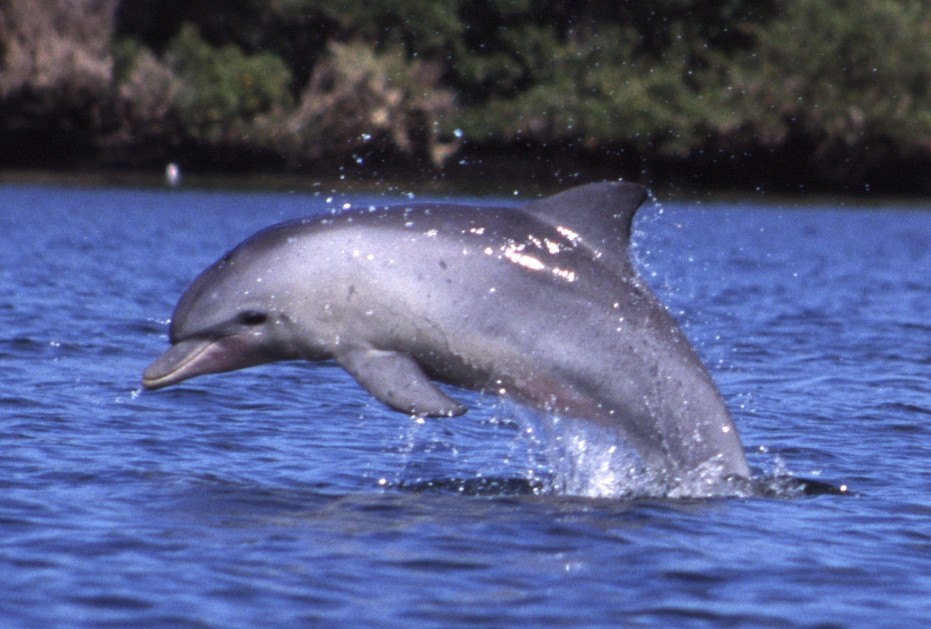Indo-pacific bottlenose dolphin
A species of Bottlenose dolphins Scientific name : Tursiops aduncus Genus : Bottlenose dolphins
Indo-pacific bottlenose dolphin, A species of Bottlenose dolphins
Scientific name: Tursiops aduncus
Genus: Bottlenose dolphins
Content
Description People often ask General Info
 Photo By Aude Steiner , used under CC-BY-SA-1.0 /Cropped and compressed from original
Photo By Aude Steiner , used under CC-BY-SA-1.0 /Cropped and compressed from original Description
Indo-Pacific bottlenose dolphins are very similar to common bottlenose dolphins in appearance. Common bottlenose dolphins have a reasonably strong body, moderate-length beak, and tall, curved dorsal fins; whereas Indo-Pacific bottlenose dolphins have a more slender body build and their beak is longer and more slender. The Indo-Pacific population also tends to have a somewhat lighter blue colour and the cape is generally more distinct, with a light spinal blaze extending to below the dorsal fin. However, although not always present, the most obvious distinction can be made with the presence of black spots or flecks on the bellies of adults of Indo-Pacific bottlenose dolphins, which are very rare in common bottlenose dolphins. Their teeth can number between 23 and 29 in each upper and lower jaw, and are more slender than those of common bottlenose dolphins. Size of Indo-Pacific bottlenose dolphins can vary based on geographic location; however, its average length is 2.6 m (8.5 ft) long, and it weighs up to 230 kg (510 lb). The length at birth is between 0.84 and 1.5 m (2.8 and 4.9 ft). The local population centering Mikura-jima is claimed to be a distinct form or species. 
People often ask
General Info
Lifespan
25-30 years
Diet
Indo-pacific bottlenose dolphin primarily consumes fish, such as mullet and sea catfish. This species also shows preference for cephalopods, including squid and octopus, along with a variety of crustaceans, displaying opportunistic foraging behaviors.
Appearance
Indo-pacific bottlenose dolphin is a medium-sized marine mammal with a streamlined body. Its skin is smooth, rubbery, and primarily dark grey, lightening to off-white on the underside. Notably, it has a prominent dorsal fin and a long snout filled with sharp, conical teeth. This species possesses a fluked tail used for propulsion. There are no significant differences in physical appearance due to age, gender, or subspecies.
Behavior
Indo-pacific bottlenose dolphin is notably social, forming groups called pods for cooperative hunting, protection, and socializing. They engage in complex communicative behaviors using vocalizations and physical gestures. Predominantly, they forage for prey using echolocation. Indo-pacific bottlenose dolphin is notably non-territorial, with pods occupying overlapping habitats.
Scientific Classification
Phylum
Chordates Class
Mammals Order
Whales and dolphins Family
Oceanic dolphins Genus
Bottlenose dolphins Species
Indo-pacific bottlenose dolphin